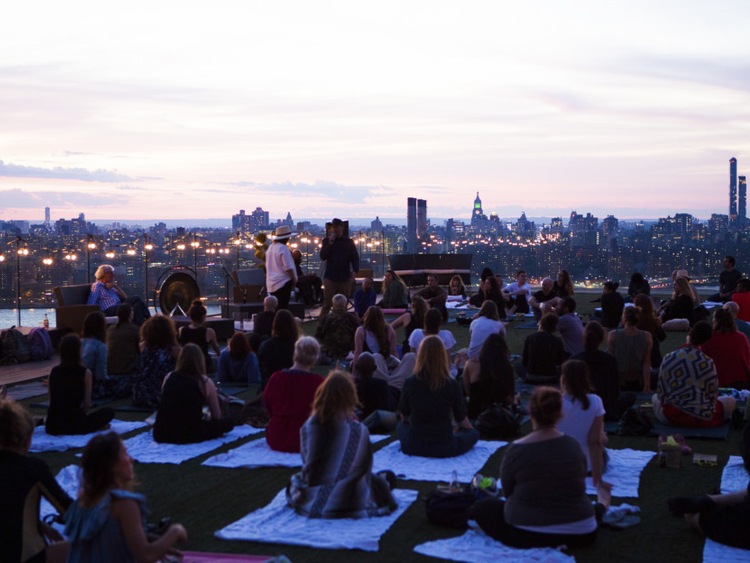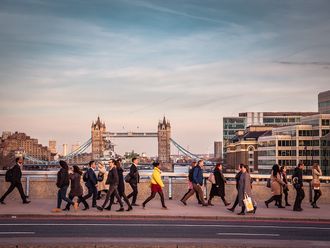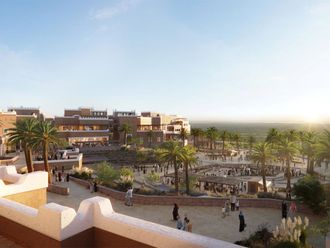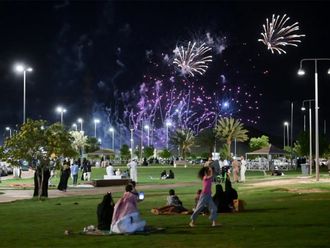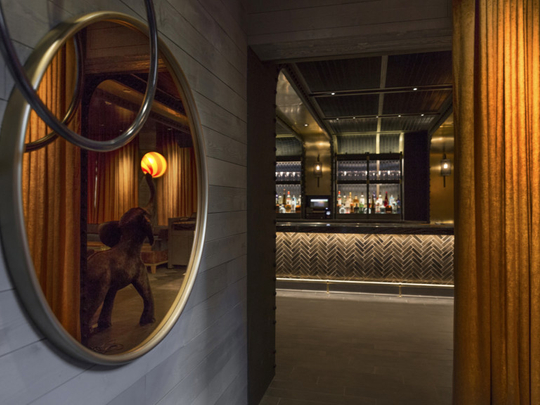
Two new Manhattan hotels feature one of the hottest and most highly coveted amenities in the hospitality industry: rooftop venues that offer food, drink, entertainment and spectacular views.
The 189-room Mondrian Park Avenue, at 30th Street and Park Avenue South, occupies what was once a 15-storey office building, to which five storeys have been added. The hotel’s former rooftop is now a lounge called Fifteen Stories, with a 3,000 square foot space enclosed by a glass structure and a 2,000 square foot wraparound terrace overlooking both Park Avenue South and 30th Street.
Stephen Brandman, co-owner and chief executive of Journal Hotels, which operates the Mondrian Park Avenue, has teamed up with Richie Akiva of the nightlife company Butter Group to operate Fifteen Stories. Even more elaborate is the Magic Hour Rooftop Bar and Lounge, a 10,000-square-foot “urban amusement park” atop Marriott International’s Moxy Times Square, which occupies a 1906 building at Seventh Avenue and 36th Street.
Originally a hotel for immigrant construction workers, the building was converted to commercial office space. Its owner, the Lightstone Group, worked with the Rockwell Group to develop the rooftop’s amenities, including views of the Empire State Building, an all-season bar, topiaries of bears in naughty poses, a carousel for up to 16 guests and a miniature golf course.
The TAO Group, the operator of several popular restaurants and nightclubs in New York and Las Vegas, is Lightstone’s partner on food, beverage and entertainment. Hotel rooftop development is not a new phenomenon. Earlier examples in New York include the Salon de Ning rooftop bar and terrace at the Peninsula on Fifth Avenue and the Plunge Rooftop Bar and Lounge at the Gansevoort Meatpacking NYC hotel.
And in San Francisco, there is the Top of the Mark at the Intercontinental Mark Hopkins. What is spurring the latest incarnations, said Henry Harteveldt, travel analyst for Atmosphere Research, is the marketing potential of the picture-taking opportunities that rooftops afford guests, who post their photos on social media, particularly Instagram.
Developers are taking those social media moments into consideration when building a rooftop experience, said Jonah Chusid, vice-president of hotel operations for Espresso Hospitality. “People will pay a premium to be able to take a photo from a rooftop restaurant with a phenomenal view,” Chusid said.
His company manages the William Vale, a 183-room hotel that opened last fall in Brooklyn’s popular Williamsburg neighbourhood. Its Westlight rooftop bar offers 360-degree views of the city and is operated by the NoHo Hospitality Group with food by Andrew Carmellini.
Indeed, food and beverage revenue generated on rooftops can be significant, said Bjorn Hanson, clinical professor at the Jonathan M. Tisch Center for Hospitality and Tourism at New York University. Beverage sales are the second-most profitable part of hotel operations in the US, after room revenue, he said, adding that hotels can charge a premium for rooftop drinks, making them even more profitable.
Rooftop amenities have become so popular that many hotels use dedicated elevators for them and often give hotel guests priority access. Moxy’s rooftop, for example, is accessible through a separate alleyway on Seventh Avenue with a “speakeasy feeling”, said Mitchell C. Hochberg, president of Lightstone.
Priority access is given to guests at the Envoy Hotel, a 136-room Autograph Collection hotel in Boston, whose Lookout Rooftop and Bar became that city’s “place to see and be seen” after it opened several years ago, said Neil H. Shah, president of Hersha Hospitality Trust, the Envoy’s owner. On weekends, he said, many of the hotel’s guests “stay only to get to the rooftop”.
Brandman of Journal Hotels said hotel rooftop amenities “truly create a connection”. “The rooftop is really about an extension of the community,” he said. “It can create experiences that didn’t exist before.”
Hotels cater to locals with a variety of entertainment and classes, some free, on their rooftops. For example, the William Vale is offering a “sunrise silent disco”, where music is broadcast to guests wearing wireless headphones, and the Moxy has Friday morning exercise classes taught by modelFIT, a Manhattan gym.
The Ace Hotel Downtown Los Angeles, which opened in 2014, offers a wide range of activities, including stand-up comedy sessions, D.J. residencies and a flower dyeing workshop. Fred Dixon, president and chief executive of NYC & Co., the marketing organisation of the city’s tourism industry, suggested that rooftops had begun to replace nightclubs in New York.
“They are multi-generational, not intimidating like a nightclub, and are much more casual than a nightclub,” he said. Of the almost 650 hotels that the industry tracker STR estimates occupy the city’s five boroughs, some 70 offer a rooftop experience, Dixon said.
Certain hotel rooftops have been developed for specific purposes. The $370 million Marriott Marquis Houston, which opened in December, is made up of a tower with 1,000 guest rooms and a podium that contains the hotel’s ballroom, among other facilities. A $10 million amenity deck, including a “lazy river” water feature in the shape of Texas, was built on the podium’s rooftop specifically to attract local residents.
In fact, the lazy river has attracted both families and meeting and convention groups to the hotel, which is connected to the city’s convention centre, said Luke Charlton, chief operating officer of the hotel’s co-owner, the RIDA Development Corp. He predicted that food and beverage revenue this year from the podium’s rooftop — which also features a 75-foot lap pool and a bar and grill and is open only to hotel guests — would exceed projections.
“We’re doing double what we and Marriott thought we would do,” he said. He added that the effect of Hurricane Harvey on the hotel had been “relatively minor”.
Cold or inclement weather can, of course, pose a challenge to hotel rooftop operators. The Envoy, for one, has come up with a novel way to handle this: In February, it installed on its rooftop six heavy plastic igloos, each seating up to 10 people and containing carpeting, chairs, blankets, and electrical outlets for lighting and heaters.
Noisy rooftop patrons can also be problematic, potentially alienating both hotel guests and neighbours. Brandman said Journal Hotels would strive to “maintain a certain type of environment reflective of the hotel, not looking to be overcrowded or noisy,” on the rooftop of the Mondrian Park Avenue. Similarly, the Envoy’s Lookout closes one hour earlier than most Boston bars, in deference to its guests and neighbours, Shah said.
And he, like no doubt many other hotel owners, will continue to forge ahead with more rooftop development. Hersha has already applied for city approval to expand Lookout by 1,900 square feet and wants to add a retractable roof, making the entire space usable year round.
New York Times News Service




